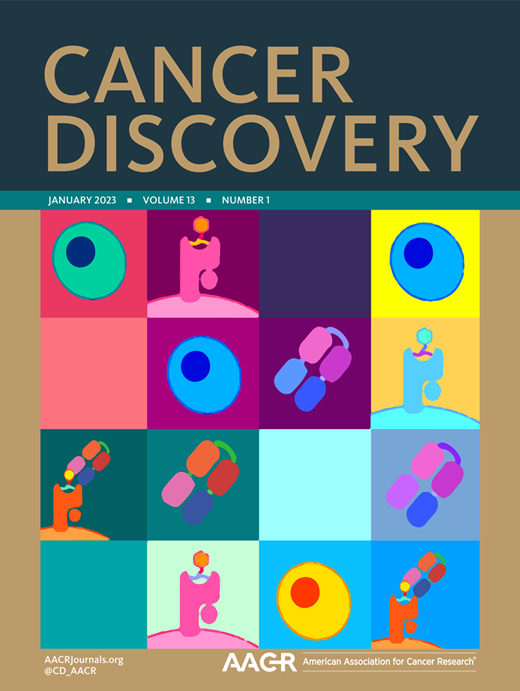An Aged/Autoimmune B-cell Program Defines the Early Transformation of Extranodal Lymphomas
Venturutti, L., Rivas, M. A., Pelzer, B. W., Flümann, R., Hansen, J., Karagiannidis, I., Xia, M., McNally, D. R., Isshiki, Y., Lytle, A., Teater, M., Chin, C. R., Meydan, C., Knittel, G., Ricker, E., Mason, C. E., Ye, X., Pan-Hammarström, Q., Steidl, C., Scott, D. W., … Melnick, A. M. (2023). An Aged/Autoimmune B-cell Program Defines the Early Transformation of Extranodal Lymphomas. Cancer discovery, 13(1), 216–243. https://doi.org/10.1158/2159-8290.CD-22-0561
A third of patients with diffuse large B-cell lymphoma (DLBCL) present with extranodal dissemination, which is associated with inferior clinical outcomes. MYD88L265P is a hallmark extranodal DLBCL mutation that supports lymphoma proliferation. Yet extranodal lymphomagenesis and the role of MYD88L265P in transformation remain mostly unknown. Here, we show that B cells expressing Myd88L252P (MYD88L265P murine equivalent) activate, proliferate, and differentiate with minimal T-cell costimulation. Additionally, Myd88L252P skewed B cells toward memory fate. Unexpectedly, the transcriptional and phenotypic profiles of B cells expressing Myd88L252P, or other extranodal lymphoma founder mutations, resembled those of CD11c+T-BET+ aged/autoimmune memory B cells (AiBC). AiBC-like cells progressively accumulated in animals prone to develop lymphomas, and ablation of T-BET, the AiBC master regulator, stripped mouse and human mutant B cells of their competitive fitness. By identifying a phenotypically defined prospective lymphoma precursor population and its dependencies, our findings pave the way for the early detection of premalignant states and targeted prophylactic interventions in high-risk patients.
Significance:
Extranodal lymphomas feature a very poor prognosis. The identification of phenotypically distinguishable prospective precursor cells represents a milestone in the pursuit of earlier diagnosis, patient stratification, and prophylactic interventions. Conceptually, we found that extranodal lymphomas and autoimmune disorders harness overlapping pathogenic trajectories, suggesting these B-cell disorders develop and evolve within a spectrum.
Journal: Cancer Discovery PMID: 36264161 DOI: 10.1158/2159-8290.CD-22-0561

